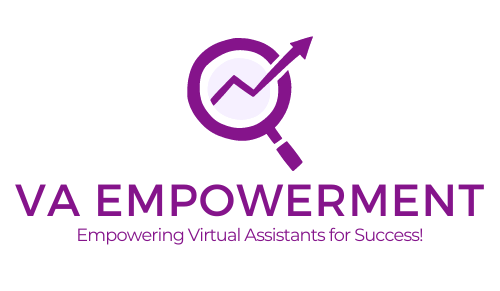Debunking Misconceptions About Hiring a Virtual Assistant
In today’s article, we will examine Byron Lazine’s video, featuring a conversation with Pavel Stepanov, the CEO of Virtudesk, as they discuss the company’s creation, growth, and the advantages of hiring virtual assistants. They explore the common misconceptions surrounding virtual assistants and shed light on the proper approach to working with them. By acknowledging the truth behind hiring a virtual assistant, you can empower yourself to effectively delegate tasks and free up your time to focus on more important aspects of your business. So join us in debunking these misconceptions and discovering the real value of virtual assistants in driving your business forward.

Misconception 1: Virtual assistants are a plug-and-play model
Understanding the misconception
One common misconception about virtual assistants is that they are a plug-and-play solution. Many people believe that once they hire a virtual assistant, they can simply assign tasks and expect them to be completed without any further guidance or input. This misconception stems from the idea that virtual assistants are highly skilled and experienced professionals who can seamlessly integrate into a business and immediately start delivering results.
The reality of hiring a virtual assistant
While virtual assistants can indeed bring valuable skills and expertise to a business, it is important to understand that they are not mind readers. Building a successful working relationship with a virtual assistant requires effort from both parties. It is crucial to provide proper guidance, clear instructions, and ongoing support to ensure that the virtual assistant understands what is expected of them and can perform their tasks effectively.
The importance of onboarding and training
Onboarding and training play a vital role in the success of hiring a virtual assistant. Just like any new employee, a virtual assistant needs to be introduced to the company culture, workflows, and processes. This includes familiarizing them with the tools and software used in the business, providing access to necessary resources, and offering training sessions to enhance their skills.
Building a strong working relationship
To overcome the misconception that virtual assistants are a plug-and-play model, it is essential to invest time and effort in building a strong working relationship. This involves regular communication, feedback sessions, and providing opportunities for the virtual assistant to ask questions or seek clarification. By fostering open and transparent communication, both parties can align their expectations and work together more effectively.
Misconception 2: Virtual assistants will get you business
Understanding the misconception
Another common misconception about virtual assistants is that they will directly bring in new business and generate revenue for the company. This misconception arises from a misunderstanding of the role of a virtual assistant and the responsibilities of a business owner. Virtual assistants are not salespeople or rainmakers; their primary role is to support and assist the business owner in various administrative, operational, and non-income-producing tasks.
The role of a virtual assistant in business growth
While virtual assistants may not directly bring in new business, they can indirectly contribute to business growth. By taking over time-consuming tasks such as email management, scheduling, data entry, and research, virtual assistants free up valuable time for business owners to focus on revenue-generating activities. This increased productivity and efficiency can lead to business growth and expansion.
The importance of clear communication and delegation
To maximize the effectiveness of a virtual assistant in supporting business growth, clear communication and delegation are crucial. It is important to clearly define tasks, expectations, and desired outcomes. By providing detailed instructions and sharing relevant information, the virtual assistant can better understand their role in contributing to business growth.
Your responsibility as the business owner
As a business owner, it is important to acknowledge that generating new business is ultimately your responsibility. While virtual assistants can assist in various aspects of the business, it is essential to actively participate in sales, marketing, and networking activities to attract new clients and customers. Virtual assistants can support these efforts by providing administrative assistance, organizing leads, and managing customer relationships, but the responsibility for business growth lies with the business owner.
Misconception 3: Virtual assistants can replace your role as the rainmaker
Understanding the misconception
Some people hold the misconception that virtual assistants can completely replace the role of the business owner as the rainmaker. They believe that by hiring a virtual assistant, they can delegate all sales and marketing responsibilities and expect the virtual assistant to generate new business on their behalf.
The true role of a virtual assistant
While virtual assistants can play a supportive role in sales and marketing activities, it is important to recognize that they are not a substitute for the business owner’s involvement. The primary role of a virtual assistant is to assist and support the business owner in their rainmaking efforts, rather than replacing them entirely.
How a virtual assistant can support your rainmaking efforts
Virtual assistants can provide valuable support in various rainmaking activities. They can research potential leads, help with lead generation and qualification, manage email campaigns, schedule appointments, and assist in follow-ups with clients and prospects. By leveraging their skills and expertise, virtual assistants can help streamline and enhance the rainmaking process, allowing the business owner to focus on building relationships and closing deals.
Leveraging their skills for non-income-producing tasks
In addition to assisting in rainmaking efforts, virtual assistants can also take over non-income-producing tasks to further free up time for the business owner. These tasks may include administrative work, data entry, social media management, content creation, and customer support. By delegating these tasks to a virtual assistant, the business owner can allocate more time and energy to revenue-generating activities.
Benefits of hiring a virtual assistant
Increased productivity and focus
One of the key benefits of hiring a virtual assistant is increased productivity. By delegating tasks to a virtual assistant, business owners can focus their time and energy on activities that directly contribute to business growth. Virtual assistants can handle routine and time-consuming tasks, allowing the business owner to prioritize strategic planning, decision-making, and revenue-generating activities.
Time and cost savings
Virtual assistants can help save valuable time and reduce costs for businesses. By taking over administrative tasks, scheduling, and research, virtual assistants can free up time that can be allocated to more profitable activities. Additionally, hiring virtual assistants can be more cost-effective compared to hiring full-time employees, as businesses only need to pay for the specific tasks and hours worked.
Scalability and flexibility
With virtual assistants, businesses can easily scale their operations up or down based on their needs. Whether it’s an increase in workload or a temporary project, virtual assistants provide the flexibility to adapt to changing business demands. This scalability allows businesses to effectively manage their resources and avoid the costs and complexities associated with hiring and training additional in-house staff.
Access to specialized skills
Virtual assistants often bring specialized skills and expertise to the table. Whether it’s social media management, content creation, graphic design, or customer support, virtual assistants can provide businesses with access to qualified professionals in specific areas. This allows businesses to leverage the skills of virtual assistants without the need to invest in extensive training or hiring additional staff.

Finding the right virtual assistant for your needs
Identifying your needs and requirements
Before hiring a virtual assistant, it is important to identify your needs and requirements. Consider the specific tasks and responsibilities you want the virtual assistant to handle, as well as any desired skills or qualifications. This will help you narrow down your search and find a virtual assistant who is the best fit for your business.
Researching and evaluating virtual assistant providers
When looking for a virtual assistant provider, conducting thorough research is crucial. Look for providers with a good reputation, positive reviews, and a track record of delivering quality work. Consider factors such as their expertise, experience, availability, and pricing structure. By evaluating multiple providers, you can compare options and choose the one that best aligns with your needs.
Interviewing and testing potential virtual assistants
Once you have shortlisted potential virtual assistants, conduct interviews to assess their suitability for the role. Ask about their previous experience, skills, and problem-solving abilities. Consider conducting tests or providing sample tasks to evaluate their proficiency and work quality. This will help you gauge their capabilities and ensure they meet your requirements.
Checking references and past experiences
Before making a final decision, don’t forget to check references and past experiences of potential virtual assistants. Contact their previous clients or employers to inquire about their performance, reliability, and professionalism. This will provide valuable insights into the virtual assistant’s work ethic and ability to meet deadlines and deliver results.
Establishing effective communication and collaboration
Setting clear expectations and goals
To establish effective communication with your virtual assistant, it is essential to set clear expectations and goals. Clearly define the tasks, deadlines, and desired outcomes for each assignment. Provide detailed instructions and ensure that your virtual assistant understands the scope of the work. This clarity will minimize misunderstandings and maximize productivity.
Establishing preferred communication channels
Virtual assistants can work remotely, which means that establishing preferred communication channels is crucial. Decide on the most efficient and convenient means of communication, such as email, phone calls, video conferences, or project management tools. Regularly check and respond to messages to keep the lines of communication open and maintain a collaborative relationship.
Regular check-ins and feedback sessions
Regular check-ins and feedback sessions are essential for maintaining accountability and ensuring that tasks are progressing as planned. Schedule periodic meetings or calls to discuss ongoing assignments, address any concerns or questions, and provide feedback on completed work. This interactive approach will help foster a sense of teamwork and ensure that expectations are being met.
Encouraging open and transparent communication
Encouraging open and transparent communication is key to a successful working relationship with your virtual assistant. Create an environment where they feel comfortable expressing their ideas, concerns, and suggestions. Actively listen to their input and provide constructive feedback. By fostering a culture of open communication, you can address any issues or challenges promptly and work together to find solutions.

Creating an efficient workflow and task delegation system
Determining tasks to be outsourced
To create an efficient workflow and task delegation system, start by determining which tasks can be outsourced to the virtual assistant. Assess which tasks are time-consuming, repetitive, or non-income producing. These tasks can include administrative work, data entry, research, content creation, social media management, and more. Delegating these tasks will free up time for the business owner to focus on core business activities.
Documenting processes and procedures
To ensure smooth task delegation and minimize confusion, document processes and procedures in a clear and accessible manner. Create standard operating procedures (SOPs) that outline step-by-step instructions for each task. This documentation will serve as a reference guide for the virtual assistant and help maintain consistency and accuracy in task execution.
Using project management tools and software
Utilizing project management tools and software can streamline task delegation and enhance collaboration. These tools provide a centralized platform for assigning tasks, setting deadlines, tracking progress, and sharing files and information. Choose a project management tool that aligns with your preferred communication channels and provides the necessary features to effectively manage projects and tasks.
Providing clear instructions and deadlines
When assigning tasks to your virtual assistant, provide clear and detailed instructions. Communicate the desired outcome, specific requirements, and any specific preferences or guidelines. Additionally, establish realistic deadlines to ensure that tasks are completed within a reasonable timeframe. Clear instructions and deadlines will help your virtual assistant work efficiently and deliver high-quality results.
Maintaining a strong working relationship
Nurturing trust and mutual respect
Maintaining a strong working relationship with your virtual assistant requires trust and mutual respect. Trust that your virtual assistant will complete tasks competently and on time, and provide them with the necessary resources and support. Treat your virtual assistant as a valued team member, acknowledging their efforts and recognizing their contributions. This mutual respect will foster a positive working environment.
Recognizing and appreciating their contributions
Recognizing and appreciating your virtual assistant’s contributions is essential for their motivation and job satisfaction. Acknowledge their achievements, provide positive feedback for their work, and express gratitude for their efforts. Small gestures such as expressing genuine appreciation or offering public recognition can go a long way in building a strong and loyal working relationship.
Offering opportunities for growth and development
Virtual assistants, like any employees, appreciate opportunities for growth and development. Encourage their professional development by providing resources, training, or opportunities to expand their skills and knowledge. By investing in your virtual assistant’s growth, you are not only enhancing their abilities but also fostering a sense of loyalty and commitment to the business.
Handling conflicts or performance issues
Conflicts or performance issues may arise in any working relationship, including with virtual assistants. When faced with such situations, it is important to address them promptly and professionally. Schedule a private conversation to discuss any concerns or issues and work together to find a resolution. Open and honest communication is essential for resolving conflicts and maintaining a positive working relationship.
Overcoming challenges and maximizing the benefits
Managing cultural and language differences
When working with a virtual assistant from a different cultural or linguistic background, it is important to be mindful of potential challenges. Be patient and understanding when it comes to potential language barriers or cultural differences. Make an effort to bridge these gaps through clear communication, active listening, and mutual respect.
Addressing time zone challenges
Time zone differences can be a challenge when collaborating with a virtual assistant. Establish clear communication protocols and find overlapping working hours to ensure effective communication and collaboration. Be flexible in scheduling meetings or calls, and explore the use of shared calendars or scheduling tools to streamline coordination.
Maintaining confidentiality and data security
Maintaining confidentiality and data security is crucial when working with a virtual assistant. Establish confidentiality agreements or non-disclosure agreements to protect sensitive business information. Utilize secure communication channels and ensure that data protection measures are in place. Regularly review and update security protocols to safeguard business data and maintain trust.
Staying adaptable and open to feedback
Virtual assistant relationships require ongoing adaptability and openness to feedback. Be receptive to suggestions or ideas from your virtual assistant and consider implementing changes or improvements based on their input. Foster a collaborative environment where continuous learning and improvement are valued. By remaining adaptable and open-minded, you can maximize the benefits of working with a virtual assistant.
Conclusion
Ensuring a successful virtual assistant experience
To ensure a successful virtual assistant experience, it is important to debunk common misconceptions and fully understand the value that virtual assistants bring to a business. By investing in onboarding, training, and building a strong working relationship, businesses can maximize the productivity and effectiveness of virtual assistants.
Busting misconceptions and embracing the true value
Busting misconceptions about virtual assistants is crucial to unlocking their true value. Recognize that virtual assistants are not a plug-and-play model, but rather require clear communication, guidance, and ongoing support. Understand that virtual assistants support business growth but are not a substitute for the business owner’s rainmaking efforts.
The future of virtual assistants in the modern workplace
Virtual assistants are an increasingly valuable resource in the modern workplace. As businesses continue to embrace remote work and leverage technology, virtual assistants offer scalability, flexibility, and specialized skills. The future of virtual assistants is promising, with the potential to revolutionize workflow efficiency and enhance business productivity.
Taking advantage of this powerful business resource
By understanding the benefits of hiring a virtual assistant and implementing best practices for communication, task delegation, and maintaining a strong working relationship, businesses can truly take advantage of the power of virtual assistants. They can optimize productivity, streamline operations, and focus on core business activities, leading to increased growth and success.

